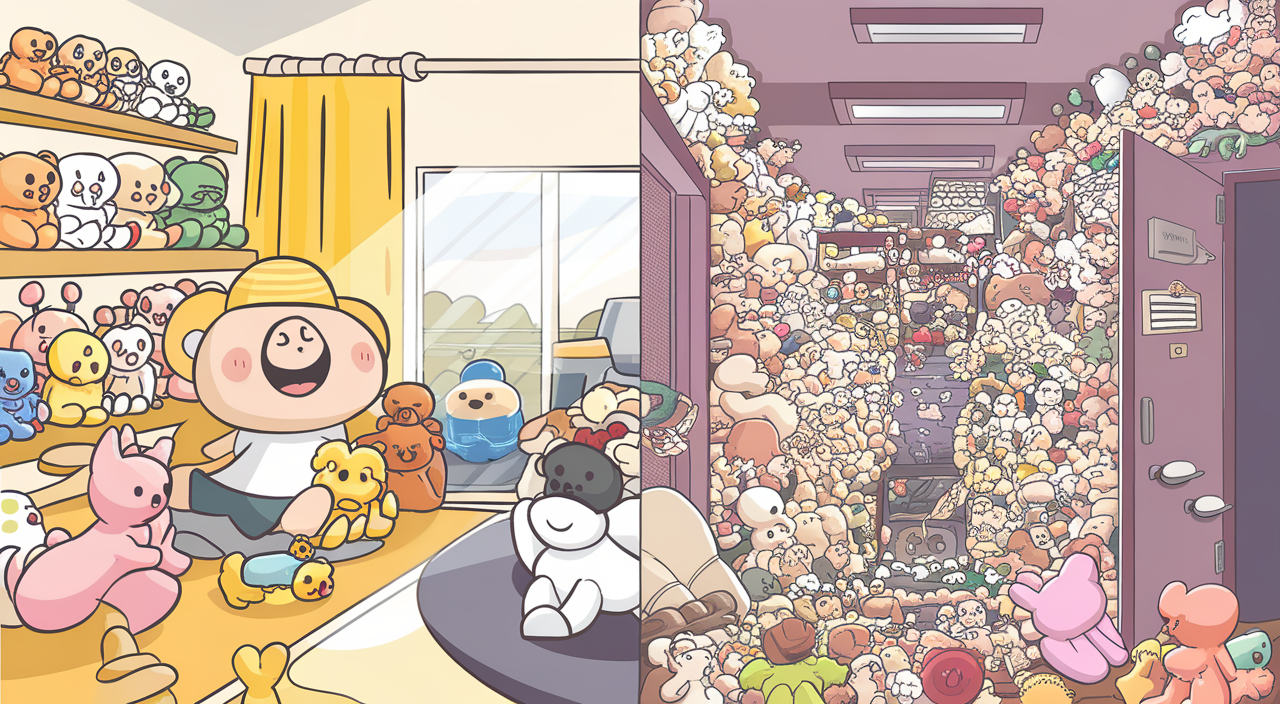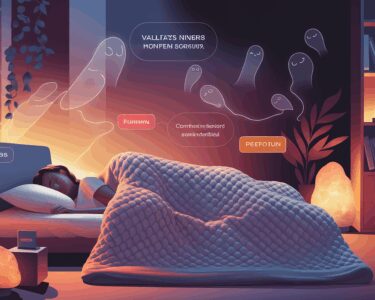Stuffed animal hoarding goes beyond casual collecting, impacting approximately 19 million Americans and creating major lifestyle challenges when plush companions take over living spaces. The difference between hoarding and collecting lies in the strong emotional attachment and anxiety felt when separating from items, typically connected to deeper psychological needs for comfort, attachment, and emotional regulation.
Key Takeaways
- Stuffed animal hoarding follows clinical patterns outlined in the DSM-5, including extreme difficulty discarding items, overwhelming anxiety, and significant impact on daily functioning.
- Unlike collectors who display and maintain their items proudly, hoarders often experience shame, hide their collections, and feel trapped rather than joyful about their possessions.
- The psychological attachment to stuffed animals stems from their ability to provide tactile comfort that mimics human touch, making them particularly appealing for those dealing with loneliness or social anxiety.
- Physical risks of stuffed animal hoarding include fire hazards, blocked emergency exits, and health concerns from dust mites, insects, and rodents.
- Treatment options like ‘Buried in Treasures’ support groups and Cognitive Behavioral Therapy help individuals process emotional connections driving collecting behavior while developing healthier coping strategies.
Why Stuffed Animal Hoarding Differs From Collecting
Understanding Stuffed Animal Hoarding vs. Collecting
I’ve noticed that many people struggle to spot the difference between a passionate stuffed animal collector and someone dealing with Stuffed Animal Hoarding. While both might own numerous plush toys, the key differences lie in their behavior and emotional responses.
Just like how some people embrace comfort in their daily routines, collecting stuffed animals can be a healthy hobby. Collectors typically display their items proudly, maintain them well, and can part with pieces when needed. They’re often social about their hobby and find joy in sharing their collection with others.
Stuffed Animal Hoarding, however, follows patterns outlined in the DSM-5 criteria for Hoarding Disorder (300.3). According to these guidelines, key signs include:
- Extreme difficulty parting with any plush items
- Overwhelming anxiety when considering disposal
- Living spaces packed with stuffed animals
- Significant impact on daily functioning
- Deep emotional distress about the situation
The Growing Impact of Stuffed Animal Hoarding
The scale of hoarding issues can’t be ignored – it affects 2–6% of the U.S. population, roughly 19 million people. While some might find comfort in emotional healing practices, others turn to accumulating stuffed animals as a coping mechanism.
This behavior differs significantly from the growing ‘kidult’ trend, where adults purchase toys, including plush items, for enjoyment. The NPD Group reports this market drove about $9 billion in toy sales in 2022. While some might seek emotional support through various means, Stuffed Animal Hoarding crosses into problematic territory when it disrupts daily life.
Unlike collectors who might indulge in their interests responsibly, people struggling with Stuffed Animal Hoarding often experience shame about their situation. They might hide their collection from others, avoid social interactions, and feel trapped by their possessions rather than finding joy in them.
The Hidden Emotional Drivers Behind Stuffed Animal Hoarding
Understanding the Attachment Bond in Stuffed Animal Hoarding
The emotional pull of stuffed animals runs deeper than simple nostalgia. Just like people might find comfort in artificial intelligence as an emotional anchor, Stuffed Animal Hoarding often stems from profound psychological needs. John Bowlby’s attachment theory explains how these soft companions become crucial emotional regulators, much like how specific breathing techniques help release trauma.
The tactile comfort of plush toys triggers a calming response in our nervous system. I’ve noticed how this physical connection mimics the comfort of human touch, making it particularly appealing for people dealing with loneliness or social anxiety. This explains why Stuffed Animal Hoarding frequently occurs alongside other emotional challenges.
The Psychology of Plush Attachments and Mental Health
The psychological impact of Stuffed Animal Hoarding links closely to several mental health conditions. Just as some people turn to comfort foods for emotional support, others find solace in collecting plush toys. The statistics paint a clear picture of these connections:
- 75% of individuals with stuffed animal hoarding show symptoms of anxiety disorders
- 50% experience Major Depressive Disorder
- Many report using plush collections as coping mechanisms for trauma and grief
The process of anthropomorphism makes parting with these items especially challenging. I’ve found that people often create deep emotional bonds with their stuffed animals, similar to how some develop unusual but comforting habits like combining sweet and savory foods for emotional satisfaction. They assign human traits to these toys, transforming them from simple objects into perceived friends and confidants.
This emotional investment turns each stuffed animal into a repository of memories and feelings, making the thought of disposal feel like a personal betrayal. The stuffed animals become more than just toys – they’re emotional anchors that provide consistent comfort during difficult times.
The Real-World Impact of Stuffed Animal Hoarding
Physical and Health Risks of Stuffed Animal Hoarding
Stuffed Animal Hoarding creates serious safety concerns in living spaces. I’ve seen how quickly these soft companions can transform from comfort objects into hazards. The International OCD Foundation Hoarding Center reports that accumulated plush toys often block crucial emergency exits and pose significant fire risks due to their highly flammable materials.
These cuddly collections don’t just take up space – they’re perfect breeding grounds for unwanted guests. Like many who’ve dealt with emotional attachments and trauma, people struggling with Stuffed Animal Hoarding often don’t realize their beloved plushies harbor dust mites, insects, and sometimes even rodents.
Financial and Social Impact of Stuffed Animal Hoarding
The financial strain of this condition mirrors other emotional coping mechanisms. The constant drive to acquire new stuffed animals can drain bank accounts, while additional storage costs add up quickly.
Here’s how Stuffed Animal Hoarding typically affects personal relationships:
- Creates tension with family members over space and cleanliness
- Limits social interactions due to embarrassment about home conditions
- Strains romantic relationships because of cluttered living spaces
- Reduces quality time with loved ones as collection maintenance takes priority
Treatment options offer hope for those ready to make changes. The ‘Buried in Treasures’ support groups have shown success in helping people manage their collections. I’ve found that combining these groups with self-care routines and Cognitive Behavioral Therapy (CBT) can lead to significant improvements. Through CBT, individuals learn to process the emotional connections driving their collecting behavior while developing healthier coping strategies.
Some adults find comfort and emotional stability through collecting plush toys, as explored in this fascinating piece about grown-ups who cherish stuffed animals.
Sources:
American Psychiatric Association: Diagnostic and Statistical Manual of Mental Disorders, Fifth Edition (DSM-5)
International OCD Foundation: Hoarding Center Resources
The NPD Group: Toy Industry Trends Reports









